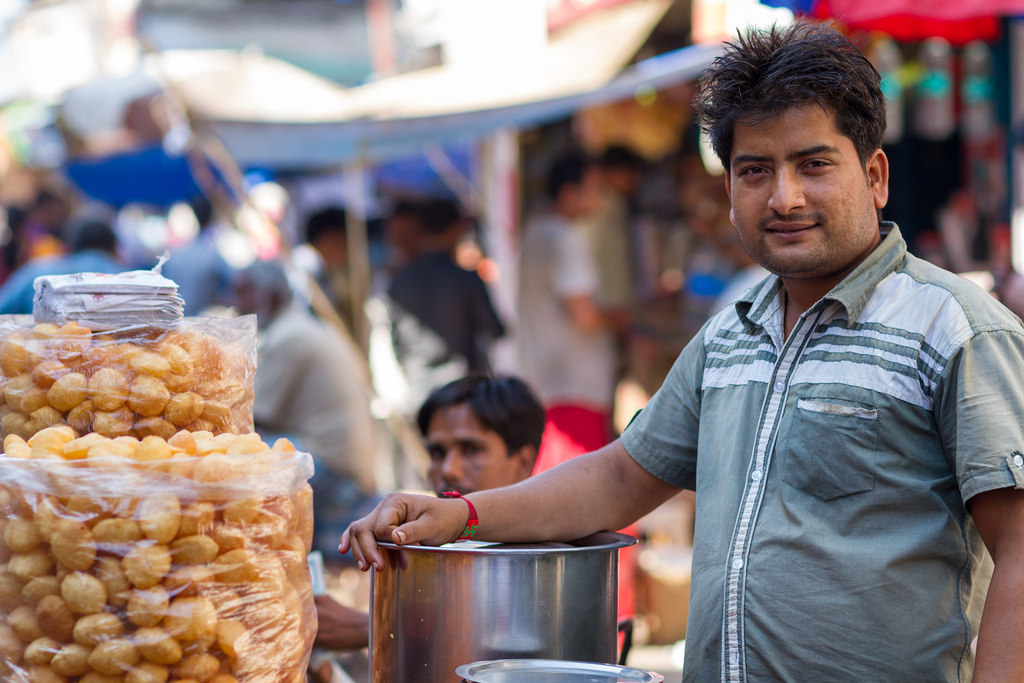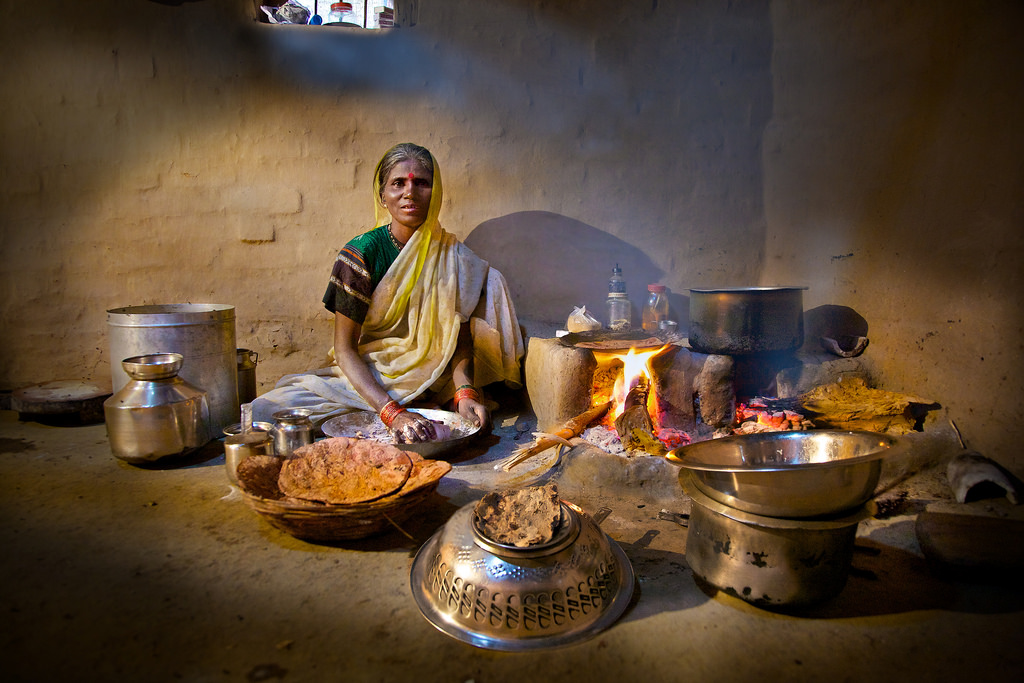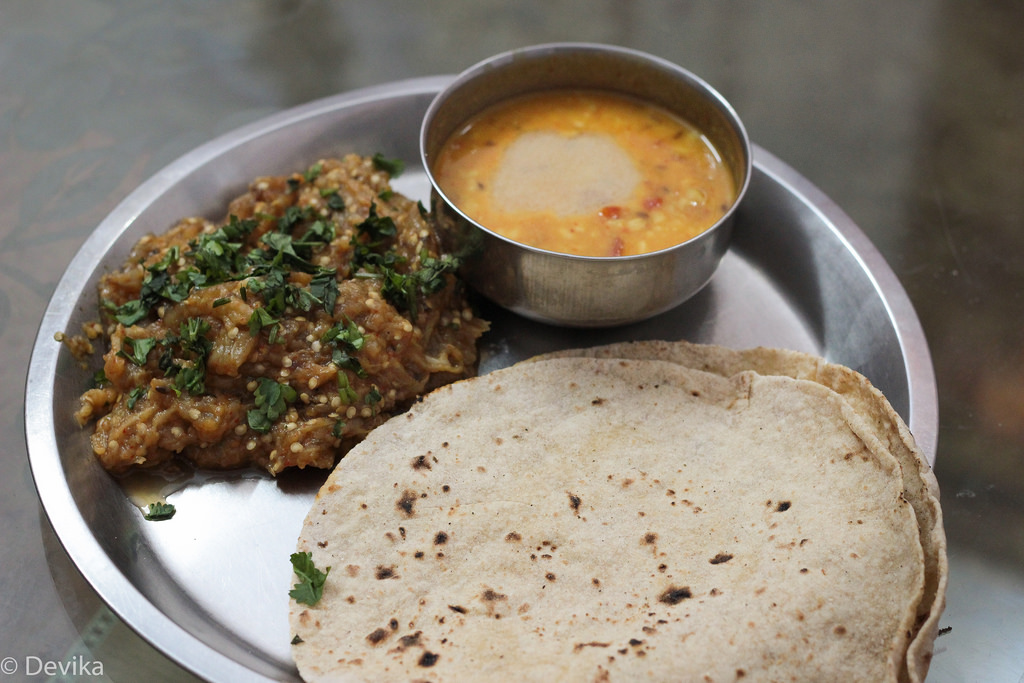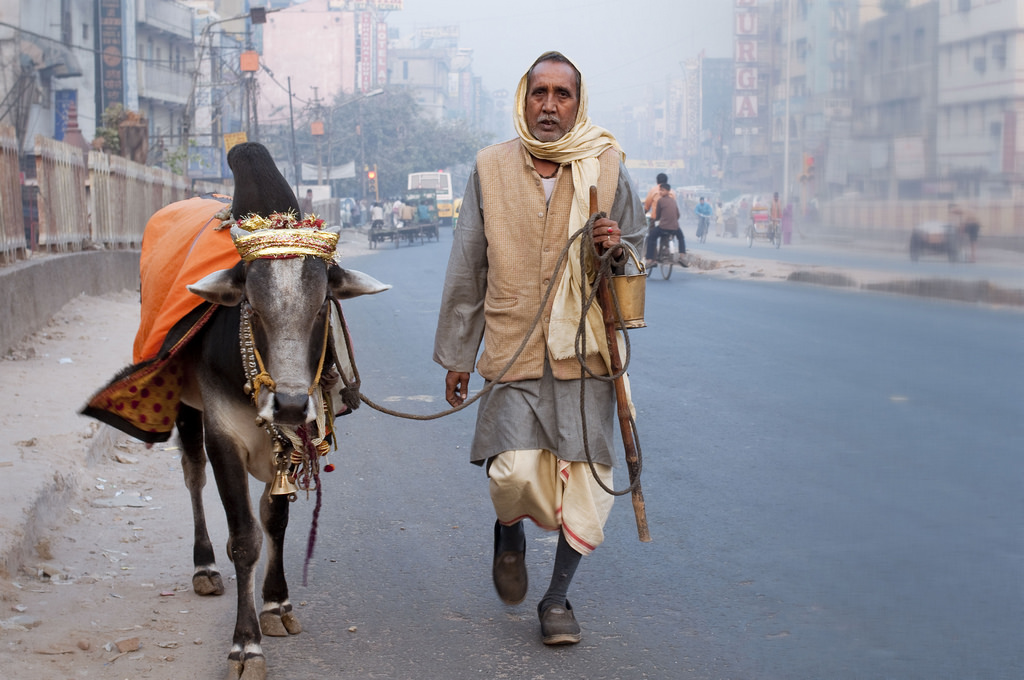Food and Drink: Daily Meals
Dietary Restrictions
Many religions are practiced in India, many of which have attendant dietary restrictions and periods of ritual fasting. Hindus consider cows sacred, and do not eat beef, and some regions of India have banned the slaughter of cows altogether. Vaishnavas do not eat garlic or onion as advised by the Bhagavad Gita, and Muslims abstain from eating pork because it is considered unclean in Islam. Sikhs do not eat pork or beef, and Jains are strict vegetarians who eschew root vegetables because the harvesting process kills organisms in the soil.
Indians typically eat two large meals—breakfast and either lunch or dinner—and two small snacks each day.
Breakfast
A healthy breakfast is important to Indians, who usually take tea or coffee alongside roti or parathas (flatbreads) and vegetable dishes. Achar (pickles) and chutneys are commonly eaten as side dishes.
Lunch or Dinner
Whether lunch or dinner is the second main meal depends on regional preferences and one’s occupation. The meal is as large as breakfast and consists of a few vegetable dishes and bread, in the North and West, or rice, in the South and East. Freshly made home-cooked meals are integral to Indian eating habits, and many Indians return home to eat when possible. In large cities, a network for relaying food between the home and office in metal tiffin boxes provides nourishment to those who cannot eat at home.
Snacks
Between the main meals of the day, Indians typically eat two savory snacks called chaat that are sold at roadside stands throughout India. They are usually hearty combinations of potato, fried dough, puffed rice, chickpeas, and strong spices.
Sweets
Indian sweets often include an array of sweet, fried dough, but ice cream and rice pudding are also popular.
Article written for World Trade Press by Christine Kiilerich.
Copyright © 1993—2025 World Trade Press. All rights reserved.

 India
India 


